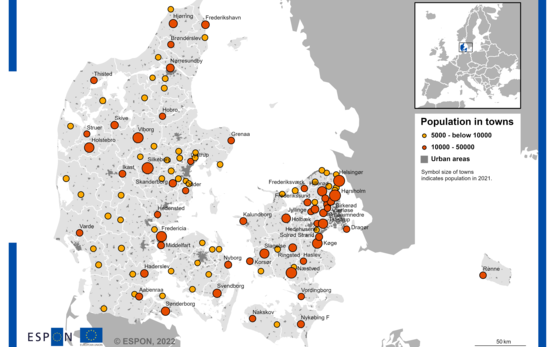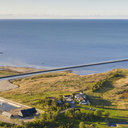Spotlight
-

Denmark, small and medium sized cities
Case Studies | August 25, 2022Looking for new activities and attractions to maintain vibrant town centres and develop appealing urban areas

Looking for new activities and attractions to maintain vibrant town centres and develop appealing urban areas

This report contributes to the Maritime Spatial Planning with two objectives: to undertake an analysis and characterization of the coastal and maritime planning and land-sea interactions from a mul

Article 174 of the TFEU states that: '’the Union shall aim at reducing disparities between the levels of development of the various regions and the backwardness of the least favoured regions.

This project, emanating from the targeted analysis project Maritime Spatial Planning and Land Sea Interactions (MSP-LSI) explores the potential spatial tensions between the deployment of renewable sources of blue energy (energy derived from our seas and oceans), with a particular focus on offshore wind energy, and other (potential) utilisations of the European seas.

This study analyses the implementation of an Integrated Territorial Investment (ITI) targeting small islands of the North Aegean Region in the 2014-2020 programming period, considering observed pat
Territorial Cooperation for the future of Europe - ESPON contribution to the debate on Cohesion Policy post-2020
A better understanding of FDI inflows and their effects on cities and regions helps to embrace the benefits of globalisation and prevents potentially negative effects.
This paper aims at informing policy-makers at the EU level about the benefits and added value of the interregional programmes in times of resource scarcity.
Polycentric territorial patterns encourage more balanced development between regions and more co-operative urban-rural relationships.

Some European capital cities jointly function as a gateway in the form of a polycentric network with regard to specific functions in a macro-region.

The current models and further potentials of polycentric development at different scales in Europe have been analysed by ESPON on the basis of urban structures, accessibility and cooperation

Cross-border metropolitan areas link national urban systems in a way that can generate a number of new opportunities and agglomeration economies.
March 2017 - ESPON presents territorial observations on key development patterns of territories with geographic specificities (coastal areas, islands, mountains and sparsely populated regions) and key messages for policy-makers for designing and implementing development strategies specifically tailored to the needs of these places.

Practical Tools for Analysis and Policy-making

In times of decreasing resources and growing responsibilities, a transition to a circular economy is both a necessity and an opportunity for cities and regions, with the potential to offer long-lasting economic, environmental and social benefits. Many local and regional authorities are already making efforts towards a more circular economy.

Polycentricity is a concept that encourages regions and cities, working with neighbouring territories, to explore common strengths and reveal potential complementarities, which brings added value that cannot be achieved by the individual regions and cities in isolation.